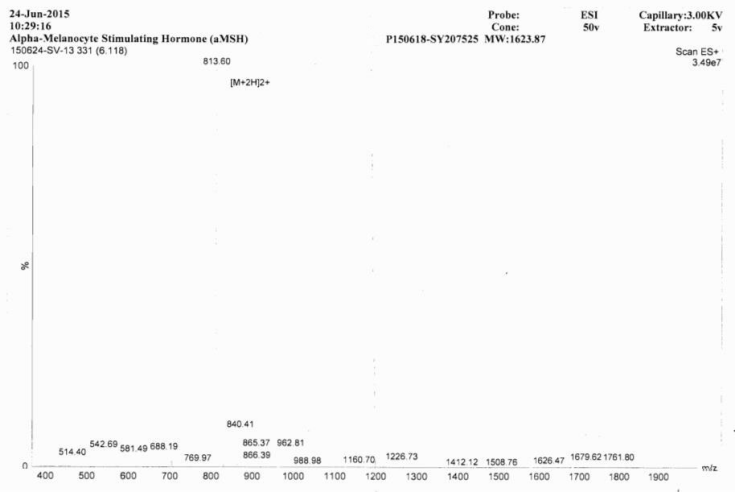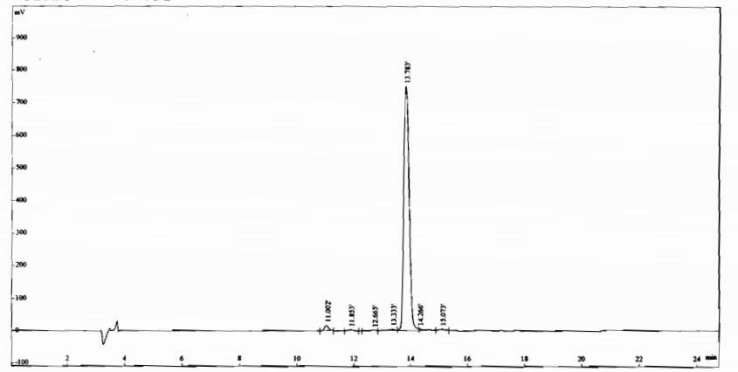Synthetic Alpha-Melanocyte Stimulating Hormone (aMSH) 

α-MSH; Intermedins; Alpha-Melanotropin, Alpha-Melanocortin; Alpha-Intermedin
Overview
Properties
- Product No.SPA239Mi01
- Organism SpeciesHomo sapiens (Human), Mus musculus (Mouse), Rattus norvegicus (Rat), Oryctolagus cuniculus (Rabbit), Sus scrofa; Porcine (Pig), Bos taurus; Bovine (Cattle), Ovis aries; Ovine (Sheep) Same name, Different species.
-
Applications
Immunogen; Blocking Peptide.
If bio-activity of the protein is needed, please check active protein.
Research use only - DownloadInstruction Manual
- CategoryTumor immunityEndocrinologyHormone metabolism
- SourcePeptide synthesis
- Predicted Molecular Massn/a
- Buffer FormulationPBS, pH7.4, containing 0.01% SKL, 1mM DTT, 5% Trehalose and Proclin300.
- Traits Freeze-dried powder, Purity > 90%
- Isoelectric Pointn/a
Share your citation
Upload your experimental result
Review
Leave a message
Loading...
Sign into your account
Share a new citation as an author
Upload your experimental result
Review
Please attach serial No. on instruction manual


Contact us
Please fill in the blank.
Name*
Organization
Address
E-mail address*
Telephone
Inquiry*
Verification code*

Sequence

Usage
Reconstitute in 10mM PBS (pH7.4) to a concentration of 0.1-1.0 mg/mL. Do not vortex.
Storage
Avoid repeated freeze/thaw cycles. Store at 2-8°C for one month. Aliquot and store at -80°C for 12 months.
Stability
The thermal stability is described by the loss rate. The loss rate was determined by accelerated thermal degradation test, that is, incubate the protein at 37°C for 48h, and no obvious degradation and precipitation were observed. The loss rate is less than 5% within the expiration date under appropriate storage condition.
Giveaways
Increment services
-
 BCA Protein Quantification Kit
BCA Protein Quantification Kit
-
 Molecular Mass Marker for Protein
Molecular Mass Marker for Protein
-
 Monoclonal Antibody Customized Service
Monoclonal Antibody Customized Service
-
 Polyclonal Antibody Customized Service
Polyclonal Antibody Customized Service
-
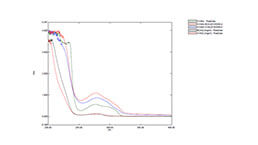 Antigenic Modification Customized Service
Antigenic Modification Customized Service
-
 Protein Activity Test Experiment Service
Protein Activity Test Experiment Service
-
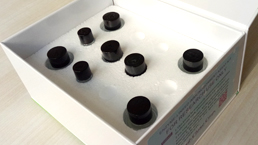 IHC Support Pack (SP Method)
IHC Support Pack (SP Method)
-
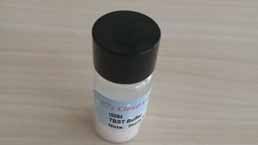 TBST Buffer
TBST Buffer
-
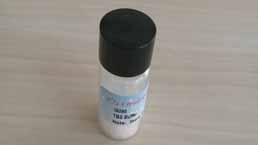 TBS Buffer
TBS Buffer
-
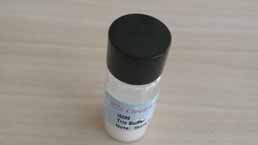 TRIS Buffer
TRIS Buffer
-
 Spike RBD Protein (S-RBD)
Spike RBD Protein (S-RBD)
-
 Protein G
Protein G
-
 Protein A
Protein A
Citations
- Generation of a human bone marrow-derived mesenchymal stem cell line expressing and secreting high levels of bioactive α-melanocyte-stimulating hormone.Pubmed: 23341471
- Pharmacological induction of skin pigmentation unveils the neuroendocrine circuit regulated by lightPubMed: 26582755
- Intermedin Restores Hyperhomocysteinemia-induced Macrophage Polarization and Improves Insulin Resistance in MicePubmed:27080257
- Pharmacological induction of skin pigmentation unveils the neuroendocrine circuit reCavia (Guinea pig )lated by lightPubmed:26582755
- Endocrine disruptors induce perturbations in endoplasmic reticulum and mitochondria of human pluripotent stem cell derivatives.pubmed:28794470
- Super-Obese Patient-Derived iPSC Hypothalamic Neurons Exhibit Obesogenic Signatures and Hormone ResponsesPubmed:29681516
- Epigenetic alterations of the POMC promoter in tobacco dependencePubmed:29871818
- Mechanisms of sustained long-term weight loss after RYGB: α-MSH is a key factorPubmed:29685637
- Alcohol Withdrawal and Proopiomelanocortin Neuropeptides in an Animal Model of Alcohol DependencePubmed: 31117084
- Intermedin alleviates the inflammatory response and stabilizes the endothelial barrier in LPS-induced ARDS through the PI3K/Akt/eNOS signaling pathwayPubmed: 32892076
- Serum alpha-melanocyte-stimulating hormone (a-MSH), brain-derived neurotrophic factor (BDNF), and agouti-related protein (AGRP) levels in children with Prader …Pubmed:35098494





